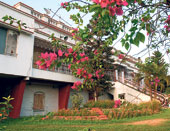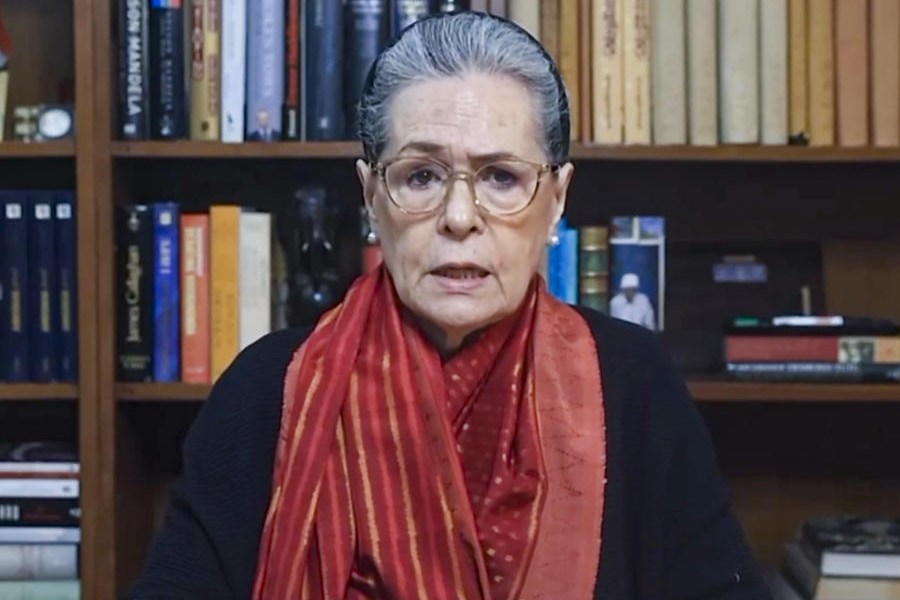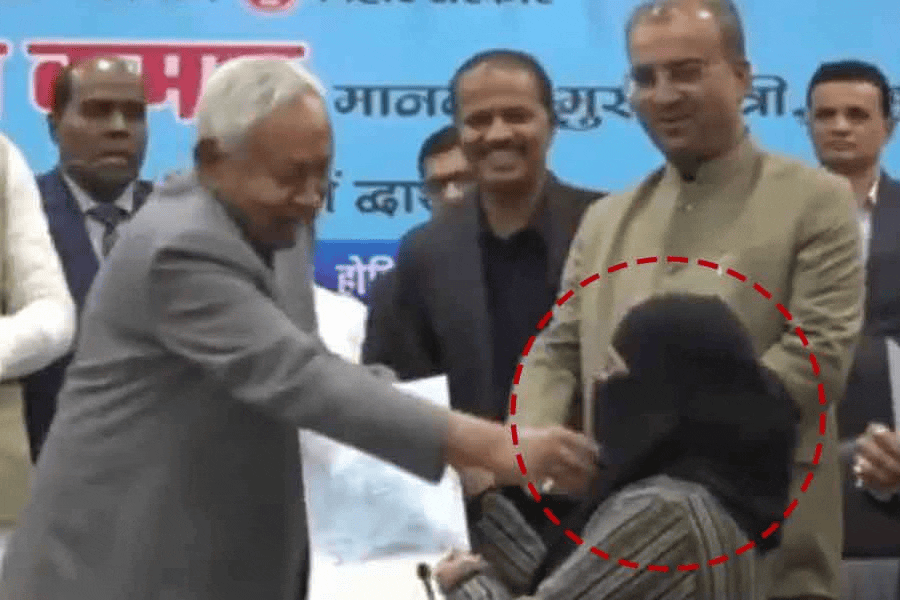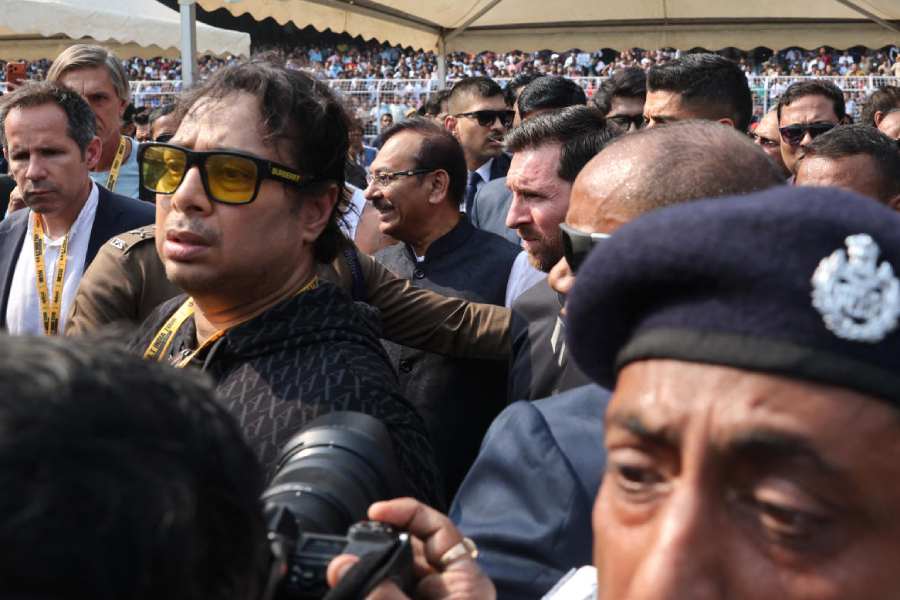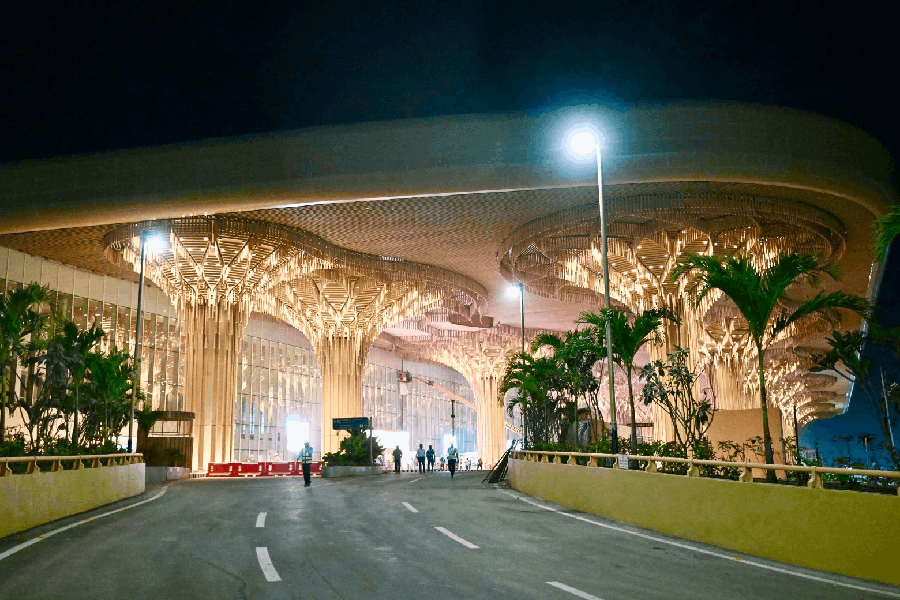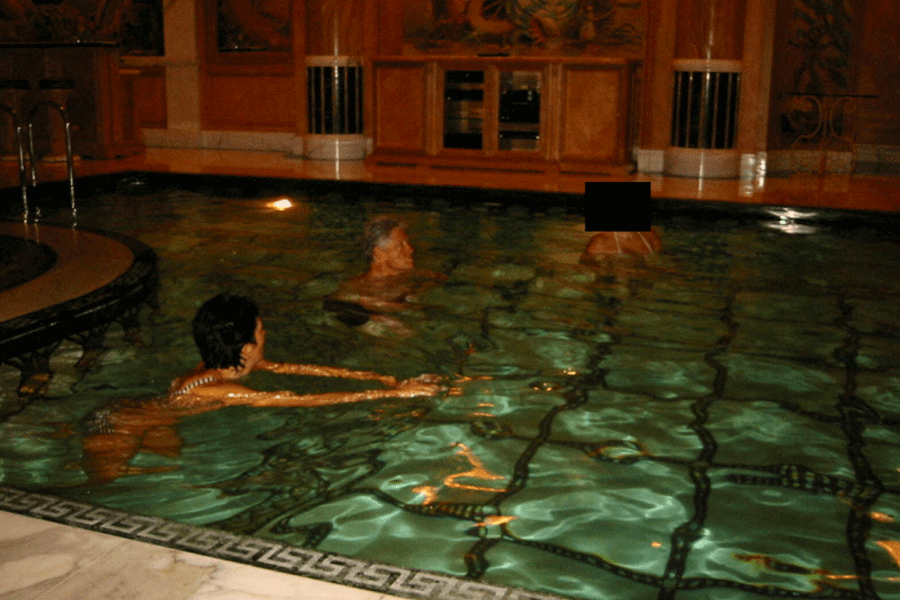 |
| The manager’s bungalow and (below) the officers’ quarters. Pictures by Pabitra Das |
 |
Two brothers Ephraim and Edmund Jonah, now in their 70s, lived in Calcutta almost 60 years ago. The Jonahs live in Israel now. When they visited Calcutta in March, they made a sentimental journey to Agarpara Jute Mills in Kamarhati, where Edmund was born 73 years ago.
This is what Ephraim Jonah wrote earlier this month about that visit from his home in Israel:
“When my brother and I returned early in March this year, we found the club house in ruins. The paved surface was cracked in many places and there was no sign of the markings of the badminton court. The manager’s bungalow has had an addition. It is obvious the tennis courts have not been used for decades and the floodlit badminton court no longer exists. The garden as my late mother had designed it has all but disappeared. Of course it has been 56 years since I saw it last.”
Agarpara Jute Mills covers a wide swathe of land next to Barrackpore Trunk Road, and opposite it is the whitewashed factory of the National Tobacco Company. It used to manufacture the once-popular cigarette brand No. 10, and now Regent is the only brand of cigarettes it produces.
Vishal market, a mall, has come up within its compound, part of which is used as a parking lot for trucks. All this and a lot more once belonged to a Calcutta Jew named B.N. Elias, who had built his business empire practically from nothing.
I first visited the jute mill in the company of Noshir Gherda, 86, who, at the beginning of his career, was employed with Oriental Electric & Engineering Co, one of the many businesses owned by B.N. Elias & Co Ltd.
Gherda said the group used to operate out of a building opposite St Andrew’s church, now known as Tobacco House. When he visited Agarpara on business, “it took me not more than 20 minutes to drive down from Park Street, where I live.”
Some of the other companies owned by the BNE group were, beside the jute mill and the tobacco company, Great Pyramid Insurance company, four-five electric companies (small units), Alpine Dairy, an advertising company, a bone mill in Beleghata and many years later, Raniganj coalfield.
It also possessed a lot of real estate — Mayfair estate comprising seven bungalows where mostly Europeans and company directors lived. The Elias family lived in Albert Road. Gherda’s boss, J.R. (Jacob Reuben) Jacob, who was in charge of some smaller units, was married into the Elias family.
Ephraim Jonah provided more information on the life of this Baghdadi Jew who was born in Calcutta and made a fortune without going to college. “Jews for the most part came to India from the end of the 18th century till the end of the 19th century from West Asia, mostly Iraq, though some European Jews also came to India to escape the Nazis in the 1930s and 1940s. The majority of the Jews from West Asia came in the latter half of the 19th century. A few Jews from Cochin and from the Bombay B’nai Israel community also settled in Calcutta. The Middle Eastern Jews were known collectively as Baghdadi Jews.
“Benjamin Hai Nissim Elias was known as BNE and his industrial and commercial organisations were known collectively as BNE’s. He was affectionately known as Benu.
“He was born in October 1865 in Calcutta. He did not complete school. At the age of 22 he left India and lived for 18 years in Singapore and Hong Kong, except for a brief return to Calcutta to marry in 1896 at the age of 30.
“He returned almost immediately to Singapore. The ‘Baghdadis’ established communities in Bombay, Calcutta, Rangoon, Singapore, Hong Kong and Shanghai. These communities were always in touch with one another, and retained their customs from their “home country”. After the British took firm control of these areas, the following generations adopted “European” dress and other customs, but clung to their religious practices.
“BNE had already made money in Singapore importing various commodities when he returned to Calcutta in1905. He started a business on his own, trading mostly in commodities, including gunnies, and made substantial amounts of money. Some believed he made most of his money exporting opium to China. By the end of World War I, he had established a good reputation among his customers, particularly in China, as a reliable businessman.
“After World War I BNE turned his eyes to the manufacture of jute products, and after one unsuccessful attempt at taking over a jute mill, he decided to build his own. The foundation stone was laid in 1927 and the mill went into production in 1928. It was profitable almost immediately, and especially so during World War II, and there was continuous expansion. From these profits, BNE’s was able to branch out into other business enterprises.
“He started the National Tobacco Co. in 1932 with a small factory, but because of his limited knowledge of the business and his inexperience, it suffered huge losses. Fortunately an Englishman from the British-owned Imperial Tobacco Company took over the management reins and turned the company around. The Englishman stayed with the company for just over a year. Again during the war years NTC made huge profits and put the company solidly on its feet. The Leaf Department of NTC was created to purchase tobacco in the Guntur area in south India.”
The jute mill has been taken over by the Sardas. All the four three-storied staff quarters, save one, inside the compound stretching practically from one bus stop to another, are whitewashed. The doors and windows are painted light blue. Although the whitewash looked fresh enough, the buildings had seen better days. There are trees and shrubbery all around and the actual mill can be seen in the distance. A driveway leads to the single-storied bungalow of the CEO, Ajoy Maity. A jackal crosses our path. It is quite obvious that additions had been made to the CEO’s bungalow. There is a pond in front of it and there are flower beds too.
The bungalow is far from plush. In the living room there is a sofa set and a bar counter, and Maity pointed out some of the stolid pieces that have remained there like a hat stand, no longer of any use now. A plastic chandelier with a broken arm hangs from the ceiling, and the figure of Justice carrying plastic scales stands on a shelf. Maity said when Ephraim and Edmund Jonah had dropped by, they pointed out the room in which the latter was born.
Although the former clubhouse is in ruins, Maity says he is trying to revive activities such as festivals and games that would bring the mill residents in close contact with each other. So a dais has been erected in front of his house to usher in Poila Baisakh. Song and dance will follow.
(to be continued)

